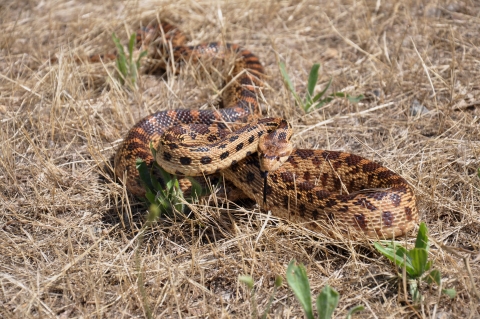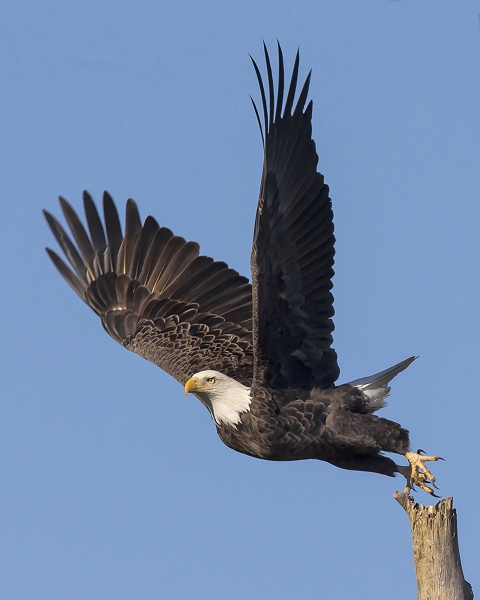Seasons of Wildlife
Spring
Spring is the best time of the year as many species are coming through the refuge and lake on their way to their breeding grounds. Visitors can see Canada Geese, Snow Geese, Northern Pintails, Ruddy Ducks, Lesser and Greater Scaup, Western Grebe, Clark’s Grebe, Common Loon and so much more.
Resident Canada geese set up nesting territories on the Snake River islands in early March, and goslings hatch by mid-April. Great blue herons, black-crowned night herons, and double-crested cormorants that nest in large rookeries on some of the Snake River islands getting a slightly later start, and typically start nesting in April and May.
Summer
The residents are starting to nest such as the White Pelican, Canada Geese, Western and Clarks Grebe. Mule Deer and Pronghorn are moving through the sagebrush sagebrush
The western United States’ sagebrush country encompasses over 175 million acres of public and private lands. The sagebrush landscape provides many benefits to our rural economies and communities, and it serves as crucial habitat for a diversity of wildlife, including the iconic greater sage-grouse and over 350 other species.
Learn more about sagebrush steppe habitats. Other mammals such as foxes, bobcats, coyotes, and more.
In early summer, western grebes dance on Lake Walcott while resident bald eagles look for food for their young. Visitors can see large numbers of white pelicans on the lake and large broods of Canada geese on pastures and fields adjacent to the Snake River.
By late July and early August, mallards and other duck species begin to congregate on the lake, looking for food in flooded vegetation. As summer progresses and the lake is slowly drawn down for irrigation, large numbers of shorebirds come to feed on the exposed mudflats. Look for dowitchers, sandpipers, godwits, yellowlegs and plovers.
Fall
The migration begins and some of our visitors fly south. The residents will stick around for a little while longer like the Bald Eagle, Ring-necked pheasant, Mule deer and pronghorn.
Bald Eagles can be seen regularly during the fall and winter. Whether perched in a tree, foraging for fish below the dam, or sitting on the ice feeding on waterfowl, they are always a majestic sight. Look for them in large trees around the park. It takes 4 to 5 years before bald eagles get their white heads, so look carefully to distinguish young bald eagles from golden eagles.
Winter
Everyone is staying inside to keep warm. Visitors can still some of our residents such as Mule deer, Ring-necked Pheasant, raccoons, and coyotes as well.
Winters at Minidoka are generally moderate but windy. Most of the 11 inches of precipitation Minidoka National Wildlife Receives receives occurs in the winter in the form of snow.
Featured Species
Almost half of Minidoka Refuge's 20,699 acres are open water and wetlands. In this arid landscape, these resources serve as an oasis, drawing numerous wildlife species from miles around. Many species use the bulrush and cattail habitat that lines the lake's small bays. Others use the willows, cottonwoods, and other tree species growing near the shorelines. The remainder of the refuge is low, rolling uplands with sagebrush sagebrush
The western United States’ sagebrush country encompasses over 175 million acres of public and private lands. The sagebrush landscape provides many benefits to our rural economies and communities, and it serves as crucial habitat for a diversity of wildlife, including the iconic greater sage-grouse and over 350 other species.
Learn more about sagebrush , grasses, and isolated juniper patches among scattered outcrops of basalt.
Our Species
Birds
Open water, marshes and mudflats provide habitat for a wide variety of waterbirds. Western and Clark's Grebes, American coots, and killdeer are common. Colony nesters on the refuge include grebes, cormorant, great blue heron, American white pelican and several other species. Over 235 species of birds have been observed utilizing the refuge.
Mammals
A wide variety of mammals occur on the refuge. Mule deer are commonly seen near the headquarters. Pronghorn are seen in the open sagebrush areas. Beaver, cottontail, porcupine (pictured), raccoon, coyote, bats, and other species are present on the refuge. Less common species include cougar, bobcat, river otter, elk and moose.
Amphibians and Reptiles
Several reptile and amphibian species are found at Minidoka, gopher snakes, rattlesnakes, racers, garter snakes and leopard frogs are commonly found on the refuge during warm summer months.
Fish
Smallmouth Bass, sturgeon, carp, rainbow trout, and yellow perch are all found in Lake Walcott and in the Snake River.
Endangered Species
Bald eagles, a protected species, can regularly be seen during fall and winter at Minidoka. Look for them in large trees around the area during winter. It takes 4 to 5 years before they get their white heads, so look carefully to distinguish young bald eagles from golden eagles. St. Anthony Dunes Tiger Beetles, a candidate species, are also found in this area.
Our Habitat
Molting Areas and Waterfowl
Unlike most birds that molt wing and tail feathers one at a time, waterfowl lose their wing and tail feathers all at once and remain flightless for a month while their feathers grow back.
The refuge’s secluded bays, free of disturbance, with lush beds of vegetation, can attract 100,000 molting ducks and geese from July through September.
Colony nesters depend on mutual defense and isolation to protect their nests from predators. Species such as American white pelicans, gulls, cormorants, and herons nest in dense colonies on small isolated islands or in groves of tall trees. Often, several species nest together in one colony, this offers additional protection to each species.



